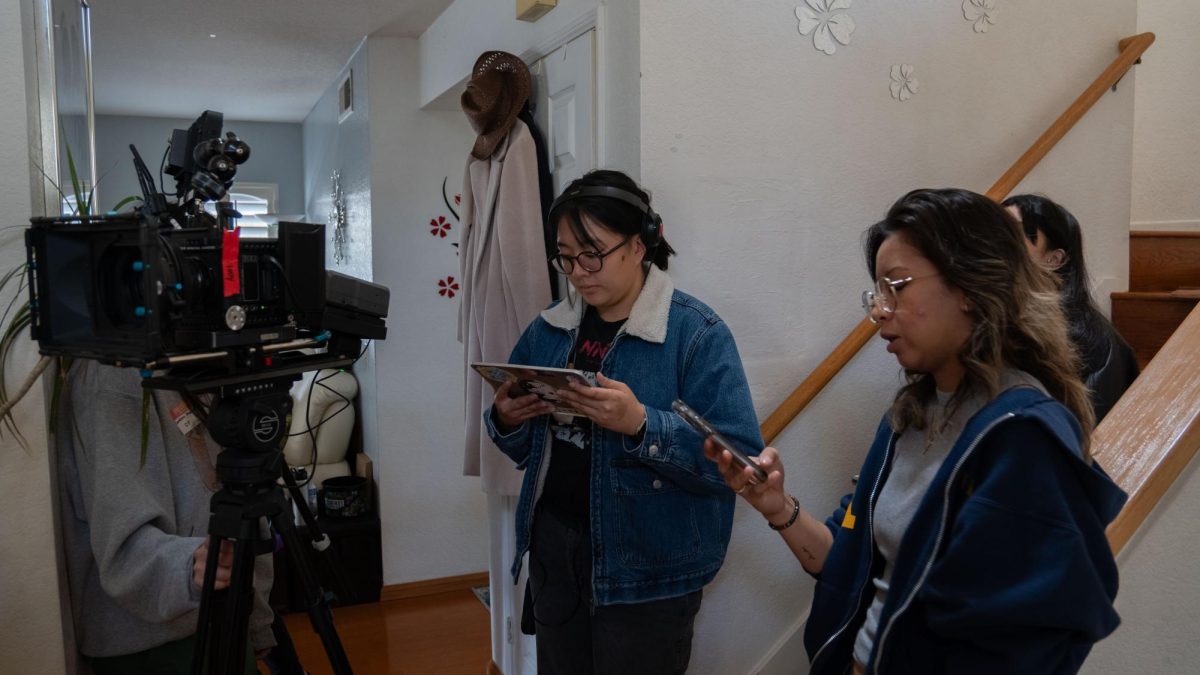To most people, one second feels like an instant. To Franklin Pham (11), one second feels like an eternity — especially when he’s solving a Rubik’s Cube.
“Time slows down,” Pham said. “It’s kind of hard to explain. You’re so focused on doing your steps specifically that you don’t focus on time.”
Pham was 12 years old when he solved a Rubik’s Cube for the first time. Equipped with the 3x3x3 cube from his older brother’s D-FantiX speed cube set and a 38-minute long YouTube video by TheCubicle titled “How to Solve the Rubik’s Cube: An Easy Tutorial,” he spent two grueling hours solving his Rubik’s Cube. Once Pham solved it, he was hooked.
“After I finished the last turn, I was so excited and I wanted to preserve the cube and [be] like ‘Look, Mom, I’ve done it,’” Pham said. “But then a part of me was like, ‘I wonder how fast I can do it.’”
And faster he got. As of March, Pham’s personal record (PR) for a 3x3x3 cube solve in competition is 6.72 seconds, according to the World Cube Association (WCA).
Over Pham’s five years of cubing experience, he’s had multiple favorite Rubik’s puzzles. At the beginning of his journey, his favorite was the 3x3x3. After a few years, he opted for the 2x2x2. Currently, his favorite Rubik’s Cube is the Pyraminx — a tetrahedron with four axial pieces, six edge pieces, and four trivial tips, that can be scrambled in over 933,120 different ways — his in-competition PR for which is 2.46 seconds.
After entering his first cubing tournament in 2020, Pham attended 15 more competitions over the span of four years and currently holds the 330th seat of best Pyramix solvers nationwide.
Pham attributes his success to a) a lot of practice, and b) a lot of YouTube.
“I learned different methods, faster methods,” Pham said. “There are different methods you use for different cubes. For Pyraminx, I use this method called L4E, which stands for ‘last four edges.’”
On March 16, WCA hosted a “San Diego Newcomers 2024” cubing competition at UCSD. After hearing about it, Pham wanted to go. There was only one issue: his track meet was set to finish just 30 minutes before the time he was slated to compete in the cube-off. Even so, he decided he’d make it work.
On the day the competition rolled around, Pham found himself running out of his parent’s car and across the UCSD campus, the gold medal he’d won from the track meet bouncing on his chest as he rushed to the competition room.
He was going to be late — very late.
It was 11 a.m. and the first event of the day, the 3x3x3 cube solve, and he arranged to compete sometime near 10:50 a.m..
“I wasn’t sure if they were ahead of schedule and [had] just moved on to the next event,” Pham said. “It was close, but I did make it.”

After making it to the competition on time, he had one main goal: to get an average Pyraminx solve time below three seconds. To calculate scores, cubists attempt to solve five non-consecutive random scrambles in the least amount of time possible. Once all five solves are finished, the best and the worst times get removed, while the rest are averaged out to produce a score.
In the first round, Pham solved the Pyraminx in 2.97 seconds, following it with a 2.84-second solve. However, Pham’s third and fourth solves took longer, as he completed the scrambles in 5.20 and 4.64 seconds, making his sought-after sub-three second average impossible.
“[When I got a 5.20], it was kind of worrying but the best and worst time is removed, and I just knew that I couldn’t get a time worse than five,” he said. “When I got that four, I was like, ‘this average is over,’ because the four would count.”
Pham ended the first round ranking second out of 88 contestants, with an average of 3.12 seconds per solve. In the following round, the finals, Pham ranked third out of 16 contestants, averaging 3.44 seconds per solve.
Although slightly disappointed in his performance, Pham’s cubing journey is far from over.
“I like cubing because [of] the feeling of solving and getting your personal best,” Pham said. “I guess that’s my favorite part of cubing — that drive to improve. What keeps me going is to beat PRs and to be places where I’ve never been before, solving at a speed that [I’ve] never [solved].”












